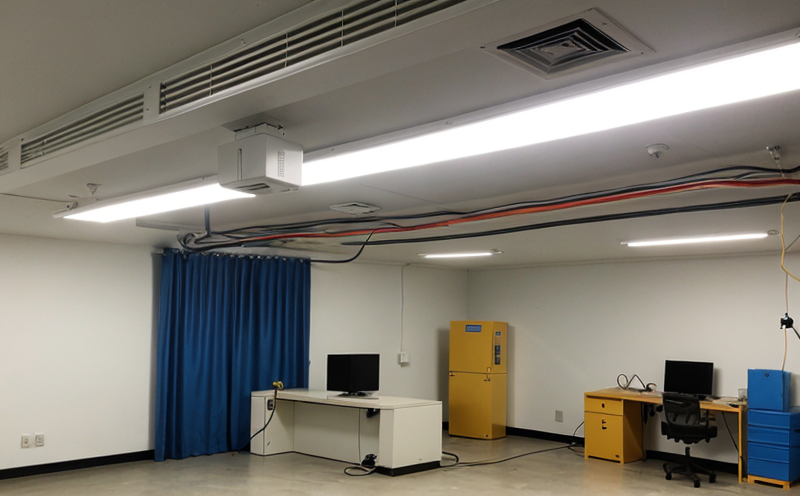ISO 7010-2 Safety Sign Compliance
The ISO 7010 series of standards provides guidelines and specifications for safety signs, which are critical in communicating hazards, providing instructions, and ensuring the safe operation of buildings and infrastructure. The ISO 7010-2 standard specifically addresses pictorial symbols used on safety signs to ensure they are universally recognized and understood.
Compliance with ISO 7010-2 is essential for organizations in the building and infrastructure sectors, particularly those involved in electrical and lighting systems. This compliance ensures that any visual communication related to safety meets international standards, thereby enhancing the safety of workers and visitors within these facilities.
The testing process under ISO 7010-2 involves several stages, starting with the preparation of the signs by the manufacturer or designer. The signs must be designed in accordance with the specified dimensions, colors, and pictograms as per ISO 7010:2015. Once prepared, these signs are subjected to rigorous testing.
The primary apparatus used for this testing includes photometers and colorimeters to ensure that the signs meet the required luminance and contrast levels. Additionally, human factors experts evaluate the ease of recognition and understanding by different cultural groups. This evaluation is crucial as it ensures that the safety signs are not only visually compliant but also culturally appropriate.
Testing for compliance with ISO 7010-2 involves a series of checks to ensure that each element of the sign meets the specified criteria. These include:
- Luminance and contrast levels
- Pictogram clarity and recognition
- Color consistency across different lighting conditions
- Cultural sensitivity evaluation
The testing process is detailed and methodical, requiring precision to ensure that all elements of the sign are in compliance. The results of these tests are meticulously documented and reported. This documentation serves as evidence of compliance with ISO 7010-2 standards, which is essential for regulatory bodies and clients.
The importance of this standard cannot be overstated, especially in sectors like building & infrastructure testing where the safety of personnel and visitors is paramount. Compliance ensures that organizations are meeting international best practices, thereby reducing risks and enhancing overall safety.
Benefits
- Enhanced Safety: Ensures that all safety signs meet the highest international standards for recognition and understanding.
- Regulatory Compliance: Demonstrates adherence to internationally recognized standards, simplifying compliance with local regulations.
- Cross-Cultural Relevance: Guarantees that safety signs are culturally appropriate, minimizing language barriers in communication.
- Increased Confidence: Provides a clear and unambiguous method of communicating hazards and providing instructions, increasing overall confidence among personnel.
Industry Applications
| Application | Description |
|---|---|
| BUILDING PROJECTS | Involves the design and installation of safety signs in construction zones, ensuring that all personnel are aware of potential hazards. |
| INFRASTRUCTURE MAINTENANCE | Ensures compliance with safety standards during maintenance activities on bridges, tunnels, and other critical infrastructure. |
| INDUSTRIAL FACILITIES | Maintains the integrity of signage in high-risk environments such as factories and warehouses. |
| PUBLIC SPACES | Ensures that all public spaces, including parks and recreational areas, are safe for visitors by meeting international safety sign standards. |
International Acceptance and Recognition
The ISO 7010-2 standard is widely recognized across the globe, with many countries adopting its guidelines as part of their national safety standards. This international recognition ensures that organizations can confidently use this compliance testing to meet global requirements.
Several countries have adopted or are in the process of adopting ISO 7010:2015 standards into their local regulations, further emphasizing the importance of this standard for companies operating internationally. The widespread acceptance of these standards ensures that organizations can maintain consistent safety practices across different regions.
The standard is particularly relevant for sectors such as building and infrastructure testing where compliance with international standards is crucial. By adhering to ISO 7010-2, organizations demonstrate their commitment to safety and quality, which is increasingly important in a globalized market.





